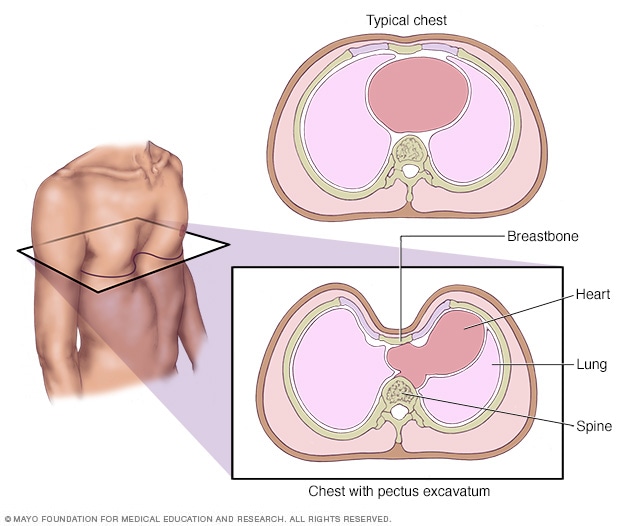What is Pectus Excavatum?
Pectus excavatum is a condition in which a person's breastbone is sunken into his or her chest. In severe cases, it can look as if the center of the chest has been scooped out, leaving a deep dent.

While the sunken breastbone is often noticeable shortly after birth, the severity of pectus excavatum typically worsens during the adolescent growth spurt.
Also called funnel chest, pectus excavatum is more common in boys than in girls. Severe cases of pectus excavatum can eventually interfere with the function of the heart and lungs. But even mild cases can make patients feel self-conscious about their appearance.
How to fix it?
Vacuum Bell
Two options are available to correct Pectus Excavatum, invasive surgery called the Nuss Procedure or more easily using a Vacuum Bell from the comfort of home.
See our FAQ's on Vacuum Bells. Read about the Vacuum Bell study or on Wikipedia
The Nuss Procedure
The Nuss procedure is a surgery to correct severe pectus excavatum.
-
A surgeon makes two small cuts in the side of the chest.
-
One or more steel bars are placed behind the breastbone and attached to the outer edge of the ribs. The surgeon uses a tiny camera to get the bars in the right place.
-
The surgeon turns the bars, raising the breastbone.
-
A metal plate (called a stabilizer), sutures (stitches), or wire is placed to hold the bars in place.
